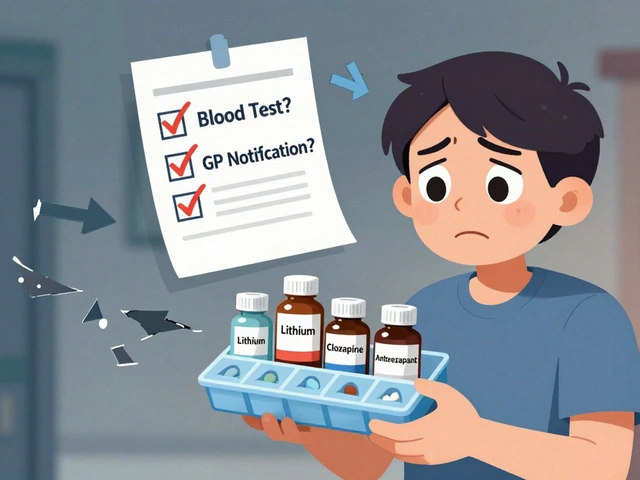Corticosteroid Inhaler: How It Works and What to Know
When working with corticosteroid inhaler, a handheld device that delivers anti‑inflammatory medication directly to the lungs. Also known as inhaled corticosteroid (ICS), it helps control airway swelling and prevents flare‑ups before they start.
One of the most common conditions that drives the need for this device is asthma, a chronic airway disease marked by wheezing, shortness of breath, and trigger‑induced inflammation. Bronchial asthma often requires daily use of an inhaled steroid to keep the lining of the bronchi calm. Another major user group is people living with COPD, chronic obstructive pulmonary disease, which includes emphysema and chronic bronchitis. In COPD, a corticosteroid inhaler reduces exacerbations and improves exercise tolerance, especially when combined with a long‑acting bronchodilator.
What to Look for When Using a Corticosteroid Inhaler
A corticosteroid inhaler requires proper technique to deposit medication where it belongs. The first step is to shake the canister (if it’s a metered‑dose inhaler) and attach a spacer if the doctor recommends one. Next, exhale fully, place the mouthpiece between your teeth, and inhale slowly while pressing the canister. Holding your breath for 10 seconds lets the particles settle in the small airways. Forgetting any of these steps can waste the dose and leave the airway inflamed.
Device choice matters, too. Pressurized metered‑dose inhalers (pMDIs) deliver a fine mist, while dry‑powder inhalers (DPIs) rely on the user’s inhalation strength. Some patients find DPIs easier because there’s no need for a propellant, but they must inhale forcefully. A spacer or valved holding chamber can improve delivery for both types, especially for kids or older adults who struggle with coordination.
Side effects are usually mild when the drug stays in the lungs, but a small amount can be swallowed, leading to hoarseness or oral thrush. Rinsing the mouth with water and spitting it out after each use cuts that risk dramatically. If you notice persistent sore throat, rash, or worsening cough, let your clinician know—dose adjustments or a switch to a different formulation may be needed.
Combining a corticosteroid inhaler with a bronchodilator, a medication that relaxes airway muscles to open the airways is a common strategy. Short‑acting bronchodilators provide quick relief during an attack, while long‑acting ones (LABA) keep the airways open for 12‑24 hours, complementing the anti‑inflammatory effect of the steroid. This partnership reduces the number of rescue inhaler puffs needed and improves overall control.
When starting therapy, doctors often begin with a low dose and increase it based on symptom control and lung function tests. Monitoring tools like peak flow meters or spirometry help gauge effectiveness. If your peak flow numbers improve and you need fewer rescue inhaler uses, that’s a sign the corticosteroid inhaler is doing its job.
For travelers, bring an extra inhaler and keep it in your carry‑on bag, not checked luggage. Temperature extremes can affect dose consistency, so store the device at room temperature and avoid leaving it in a hot car. Many inhalers have a dose counter; checking it regularly prevents surprise empty canisters.
Special populations—children, pregnant women, and the elderly—often need tailored instructions. Kids may need a spacer with a mask, and parents should demonstrate the technique at every visit. Pregnant patients can often stay on the same inhaled regimen because the medication stays mostly in the lungs, but a doctor’s guidance is essential. Older adults should watch for dexterity issues and consider inhalers with easy‑click mechanisms.
In summary, a corticosteroid inhaler is a cornerstone of chronic respiratory disease management. It works best when you understand the link between asthma and inflammation, recognize how COPD benefits from reduced flare‑ups, and pair it with an appropriate bronchodilator. Mastering inhaler technique, monitoring response, and staying ahead of side effects turn this small device into a powerful tool for breathing easier.
Below you’ll find a curated set of articles that break down specific drugs, compare inhaler types, and give practical tips for everyday use. Dive in to get the details you need to keep your lungs happy and your inhaler working right.
How to Properly Use a Betamethasone Inhaler for Asthma Relief
Learn the step‑by‑step method for using betamethasone inhalers, from device prep to proper inhalation, cleaning, and monitoring asthma control.
Read More





